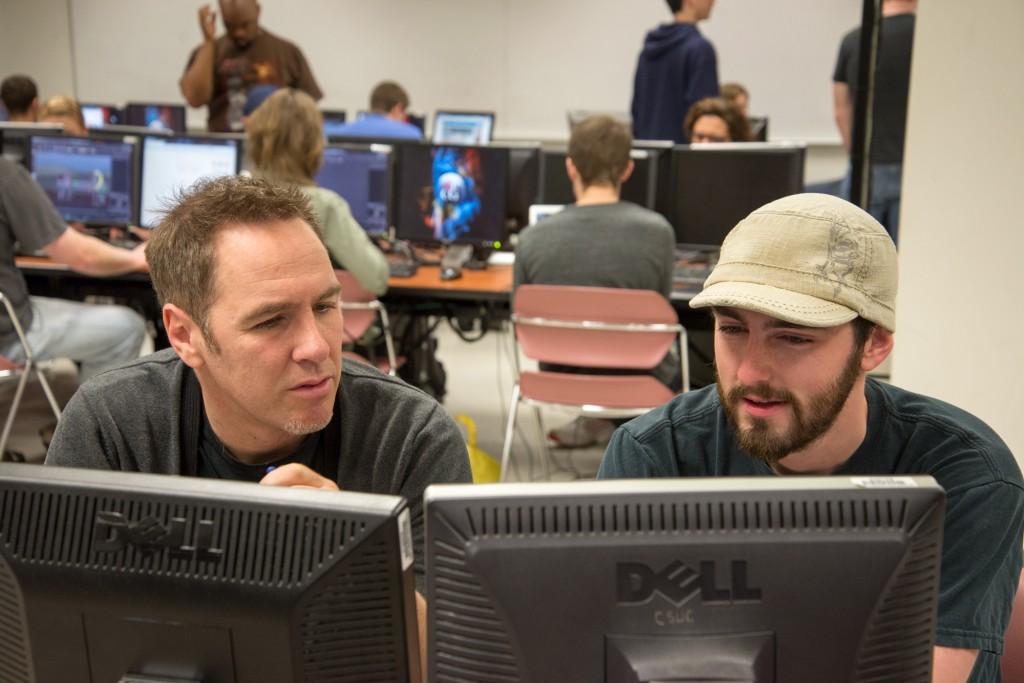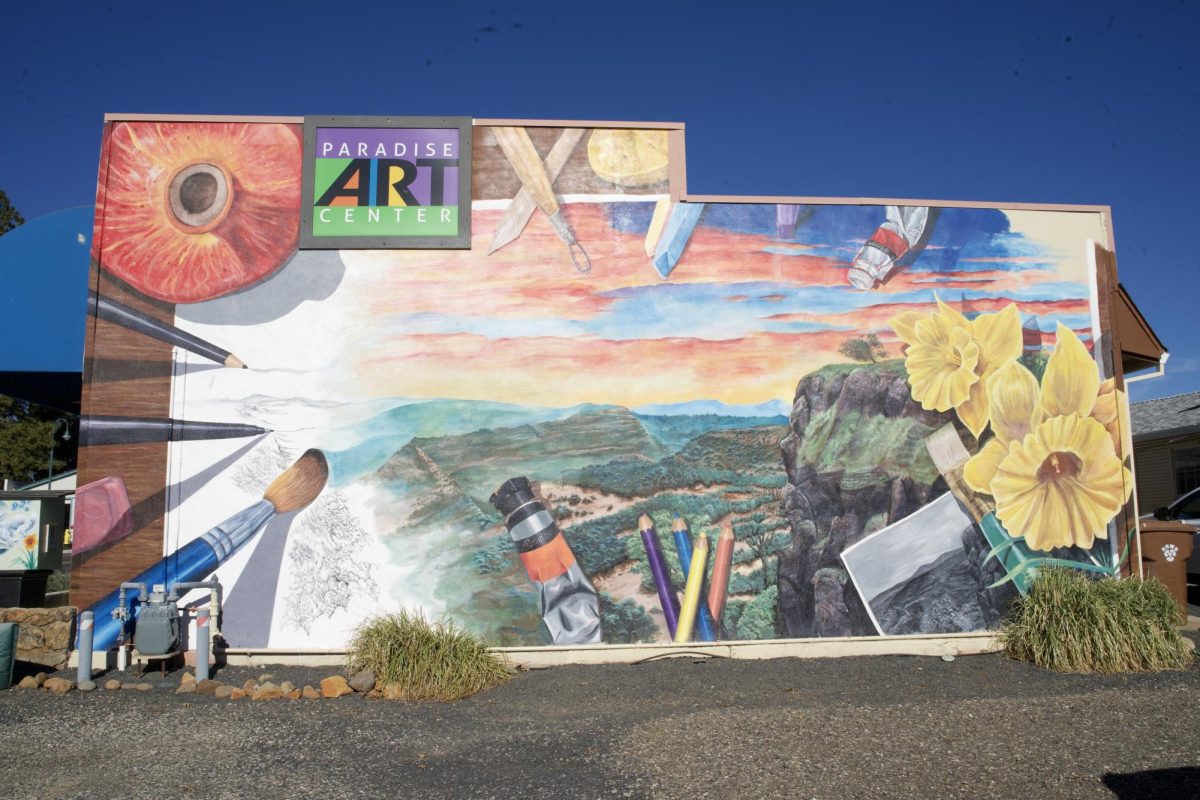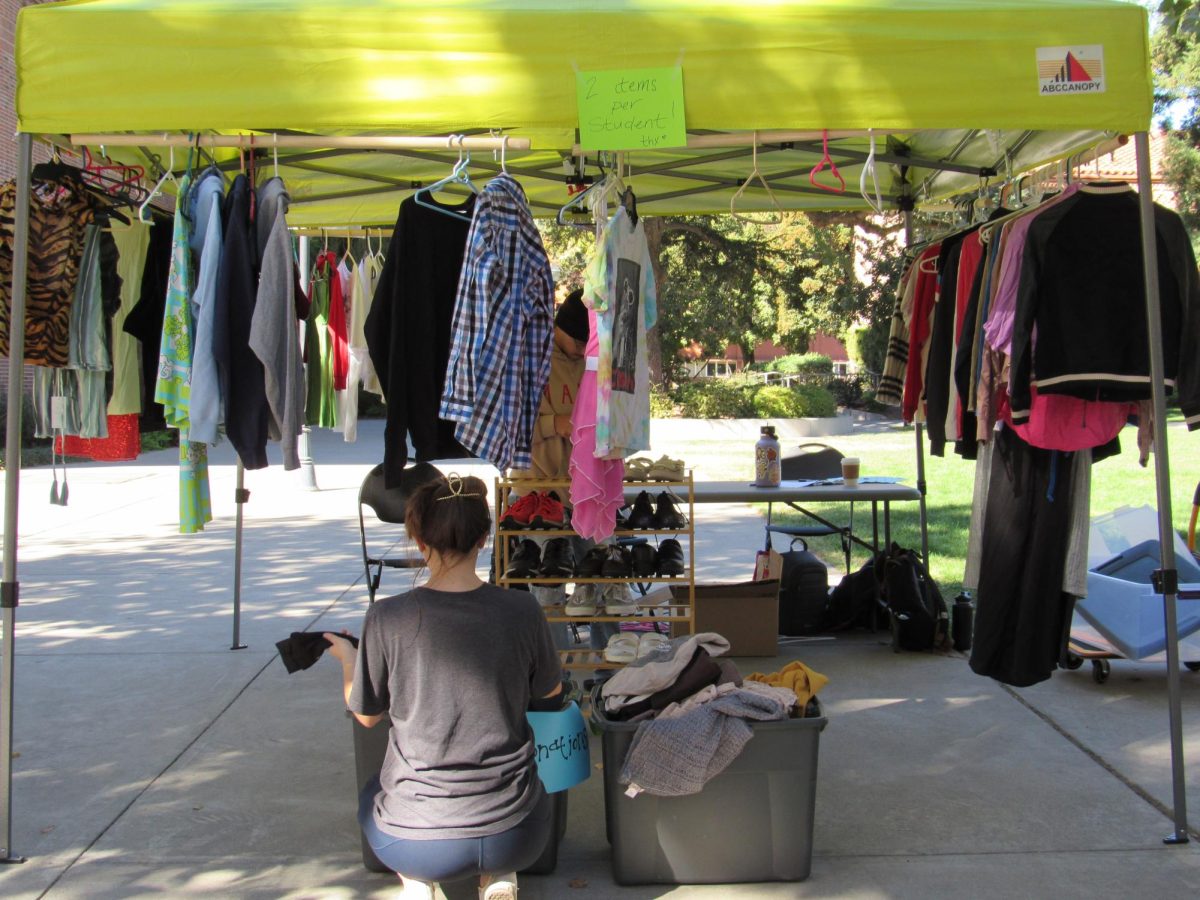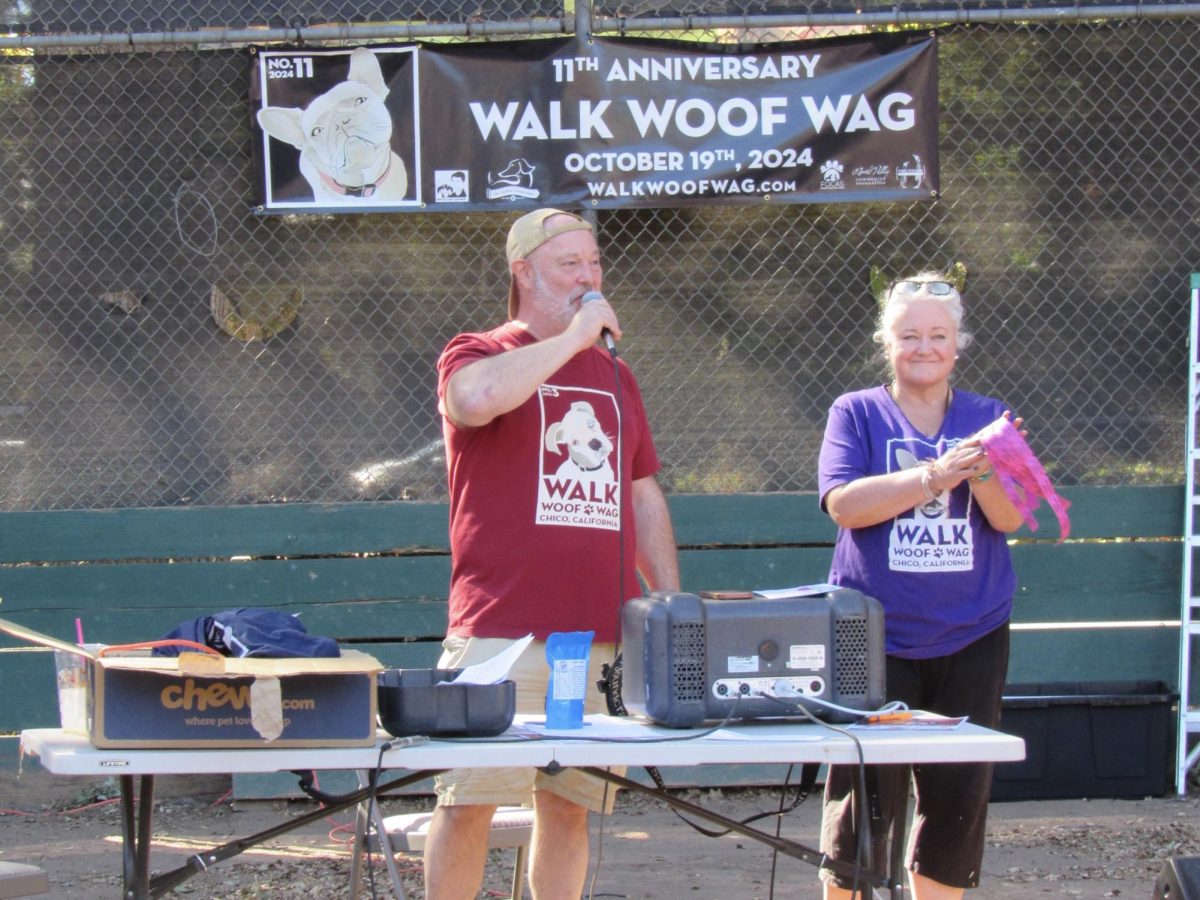
“Alright nerds, who’s up!” shouts the instructor, the center of attention in the dark room.
Crouched workers are huddled around brightly-lit screens in the dark room and the wheels can practically be seen turning in their heads. Their eyes scan rapidly and they feverishly click their mouses.
It’s just another day in film animation instructor Mark Pullyblank’s lab.
Outside of the classroom, Pullyblank works on large-scale productions, including the second and third “The Hobbit” films last summer.
He played a big part in the animation technology behind the dragon in “The Hobbit: The Desolation of Smaug,” Pullyblank said. But, he hasn’t seen the movies or read the books.
“You know what it’s about and I’ve been working on it so long I don’t necessarily need to go and see it,” he said. “It’s all about the process. I might as well make it as great as I possibly can.”
He even mixed the movie up with “Harry Potter” during filming.
“I went to the animation director and I said, ‘Hey, do you know where the Ravenclaw environment is?’ and the whole room got silent,” Pullyblank said. “He said it was a sackable offense.”
Pullyblank previously worked in animation in Vancouver, British Columbia, he said. He animated for films such as “Avatar” and “The Adventures of Tintin” in New Zealand before moving back to Vancouver and working for Sony Pictures Animation.
Then one night, he and his wife talked about where they would live if they could live anywhere.
“I just called the school and I said, ‘What do you guys got?’ and they said, ‘We’ve got this,'” Pullyblank said.
The animation professor continues to work in the industry.
He has enjoyed working for Weta Digital and getting close with Peter Jackson, director of “Lord of the Rings,” he said.
“I’m not big in the technical stuff,” he said. “It’s mostly brainstorming.”
Animators had little if any interaction with the actors, Pullyblank said. However, the animation studio was just across the street from the football field-sized green screen where the actors worked on “The Hobbit” movies.
Pullyblank would shoot film at night and show Jackson his work the next day, he said. He had the opportunity to be almost a gag writer, essentially creating some of the storyline for the movie.
“I just kinda spent two months hobnobbin’ and sipping lattes saying, ‘What if the ogre led with his left foot? Brilliant!'” Pullyblank said. “That’s the job. People get paid for that stuff.”
The first film he worked on was “Garfield: The Movie,” Pullyblank said. He also worked on movies such as “Night at the Museum,” “Elektra” and “Blades of Glory.”
“I like the comedies, you know?” he said.
His best experiences working on films were for “Garfield 2” and “Dr. Dolittle 3” because of his colleagues, he said.
In this industry, all animators get a lot of negative feedback at the beginning, Pullyblank said.
“It’s like playing the trumpet,” he said. “It’s going to sound like a fart for three months.”
Successful animators stay humble, Pullyblank said.
“Although they’re doing really amazing work, you don’t find anyone in that system who really struts about it,” he said. “Everyone is like-minded.”
John Pozzi, digital art and design lecturer, felt connected to Pullyblank right upon meeting, he said.
“We became good friends very quickly,” Pozzi said.
The applied computer graphics program is underfunded and understaffed and Pullyblank brought a much-needed energy to it, he said. They team-teach some classes.
“He is a diamond in the rough,” Pozzi said.
Nicole Dozier, a senior applied computer graphics and English literature double major, has taken all of Pullyblank’s classes and is his teaching assistant.
“Mark is super passionate about animation and the industry,” she said. “He’s really energetic and brings that to the classroom.”
Dozier wants to be an animator and enjoys how Pullyblank works with students one-on-one, she said.
“He’s so goofy,” Dozier said. “That’s part of the enthusiasm. He wants us to be excited too.”
Risa Johnson can be reached at [email protected] or @risapisa on Twitter.









